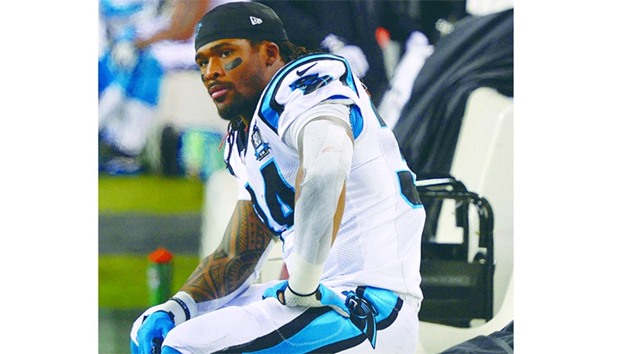DeAngelo Williams is the oldest running back in the NFL, and Cam Heyward made sure everyone knew it during training camp. He encouraged the fans at Saint Vincent College to serenade Williams with a rendition of “Happy Birthday” every day, even though his real birthday is April 25.
Williams is 33 and a month older than Frank Gore of the Colts. (John Kuhn of the Saints is older, but plays fullback).
Mention his age to Williams and he’ll gladly make the next few minutes as uncomfortable as possible. Le’Veon Bell knows that chip on Williams’ shoulder well. His locker is only a few stalls away and he hears the lectures Williams gives reporters on a regular basis.
“He should have a chip on his shoulder,” Bell said. “I’ll be blessed if I make it to that age and still play at the level he is.”
In an era when most running backs are past their prime by the time their rookie contract expires, Williams has defied the odds. In his first season with the Steelers, after spending the first nine years of his career with the Carolina Panthers, he had one of the best seasons in the past quarter century for a running back 32 years or older.
During a season in which Bell missed 10 games because of suspensions and injuries, Williams rushed for 907 yards and 11 touchdowns. Only four running backs 32 or older rushed for more yards in a season in the past 25 years.
Since 1990, according to research done by sportingcharts.com, Ricky Williams had the best season for a running back 32 or older when he rushed for 1,121 yards in 2009. Pro Football Hall of Famer Emmitt Smith rushed for 1,021 when he was 32 in 2001. He also rushed for 975 yards and 937 yards at 33 and 34. The only others to rush for more yards than DeAngelo Williams when they were 32 were Mike Anderson (1,014 in 2005) and former Steeler and Pro Football Hall of Famer Jerome Bettis (941 in 2004).
Perhaps the most impressive part of Williams’ resurgent season was he did it in only 200 carries. In the past 25 years, his 4.5 yards per carry average was bested only by Ricky Williams, who averaged 4.65 per rush in ‘09.
With the 2016 season one week away, Williams is stepping back into the spotlight. He’ll be the starting running back for the first three weeks of the season while Bell serves his three-game suspension for violating the league’s substance abuse policy.
“Last year he showed the whole world he hasn’t lost a step,” offensive lineman Marcus Gilbert said. “He’ll hold it down for the three games just like he did last year. He stepped up big for us. We’ll be counting on him, and I know he won’t let us down.”
One reason Williams enjoyed a resurgent season is his dedication to fitness. When he signed with the Steelers last spring coach Mike Tomlin asked him to lose weight. He reported to his first Steelers training camp at 217 pounds, a weight he hadn’t seen since college.
“He has great work ethic,” said second-year fullback Roosevelt Nix, who blocked for Williams last season. “If you look at him, he’s consistently at a good weight. He doesn’t play like he’s old. He doesn’t run like he’s old. He takes care of his body. That’s what happens when you take care of your temple.”
Williams not only ran the ball well for the Steelers. He set career highs in receptions (40) and receiving yards (367) in his 10th NFL season.
His teammates might argue the best thing about watching Williams is his the way he regularly abuses unsuspecting linebackers and defensive ends in pass protection. He knocks players with 75-100 pounds on him to the ground with regularity.
“His pass pro is phenomenal, especially off the outside,” Nix said. “Once we saw it, it’s what we got used to. He’s a savvy vet. He’s been playing this game for a long time so he knows how to put himself in position to be successful.”
Bell is the best all-around running back in the league, but if Williams gives the Steelers similar production during Bell’s absence the offence shouldn’t miss much of a beat.
Williams rushed for 127 yards in his Steelers debut against the Patriots in the opener last season. The following week against the 49ers he rushed for three touchdowns.
Bell returned from a suspension in Week 3 and Williams’ role was reduced. He had 22 carries in the next six weeks when Bell started.
But after Bell was lost for the season in Week 8 against Cincinnati Williams picked up right where he left off and had three more 100-yard games in the final eight contests, including 170 against Oakland the week after Bell was injured.
“The only thing that surprised me is how well his body recovers, how he can run between the tackles and take hits and continue to do it on a daily basis and perform at that age,” Bell said.

File picture of DeAngelo Williams during his days with the Carolina Panther.


